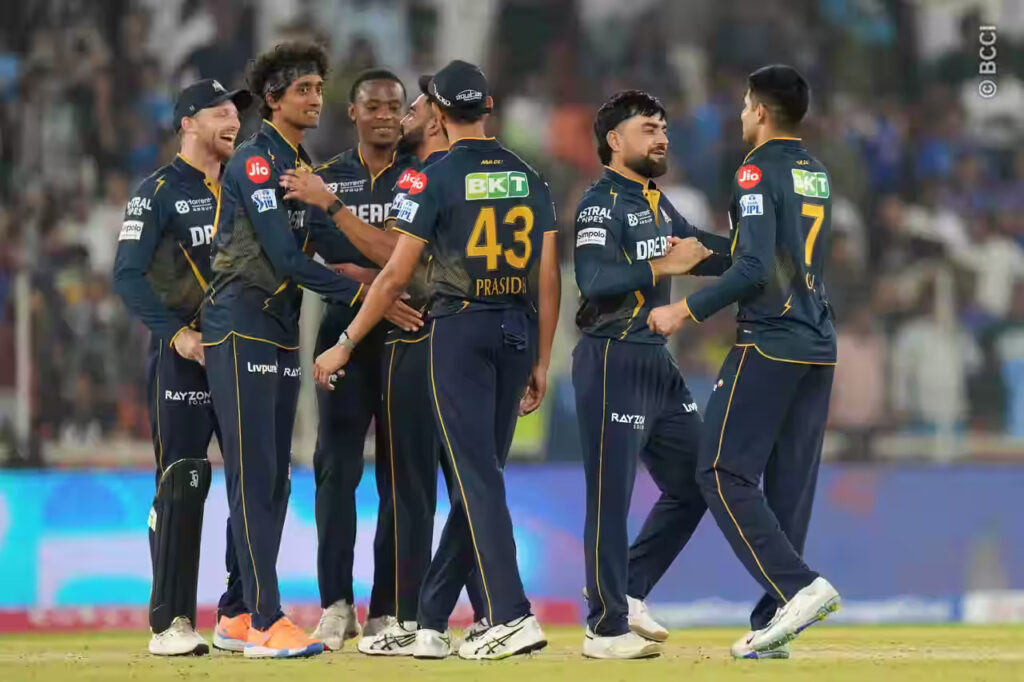
What is a balanced pace attack in cricket? It is a reference point to a bowling line-up comprising different cogs, which provides the captain with enough options for various phases of the innings. The Gujarat Titans is one of the IPL franchises that has invested heavily in picking pace bowlers with different traits. So, here’s a peek into how GT have gone about trying to find various nuts and bolts of a pace-bowling engine.
Mohammed Siraj, Prasidh, Kagiso Rabada and Arshad Khan are some of the mainstays of that pace attack. Among the lot, Siraj is the current leader of the hunting pack. Incidentally, at the start of the IPL season, there were question marks over Siraj. The quick bowler was left out of the Indian squad for the Champions Trophy, with his profligacy in the slog overs being held against him.
To make matters worse, Royal Challengers Bengaluru also opted to not retain him. However, in the nick of time, Siraj has found his rhythm at his new home – Gujarat Titans. After a disappointing start in the opening game against Punjab Kings, where he went at more than 13 an over, Siraj has been making regular incisions in the PowerPlay.
By the completion of the PowerPlay overs itself, Mumbai Indians had lost two wickets while RCB were three down. It was Siraj who took all those wickets. It shouldn’t come as a surprise that neither of the sides fully recovered from the early blows. All the hard yards in his own training workshop have yielded results; Siraj is now swinging it both ways, alongside having an effective 3/4 seam ball.
Prasidh, Siraj’s pace colleague, had a point to prove ahead of the IPL. The intense scrutiny over Prasidh wasn’t exactly on his skill set. Instead, his detractors pointed to his rather flaky temperament. Just like Siraj, Prasidh too had a poor start to the season, going at more than 13 an over. Since then, he has produced figures of 2 for 18 and 1 for 26 from his quota of four overs versus MI and RCB respectively.
More importantly, Prasidh has executed the think-tank’s plans. In the game against MI, he employed into-the-pitch slower ones, along with hit-the-deck skills. He also adjusted to the slightly different conditions at the Chinnaswamy by extracting more lift. He has also blended his weapons with control; supposedly one of his weaknesses.
Rabada, the veteran fast bowler, may not be at the peak of his prowess. In fact, since the start of 2022, Rabada has averaged under 30 only once over an IPL. The South African speedster still brings enough experience to the table. Rabada also missed out on the game against RCB because of personal reasons. Arshad, the left-arm swing bowler, turned out to be an adequate replacement, bagging the prized scalp of Virat Kohli.
The left-arm bowler is still learning the tricks of the trade, and averages close to 50 in the IPL. Although he possesses enough promise with both the bat and ball and can turn out to be a fine utility cricketer. With Ishant Sharma and Gerald Coetzee also in the ranks, GT have enough depth in the pace department.
Last but not the least, Ashaih Nehra, the head coach, has marshalled his bowling troops quite well. Nehra, who is famous for using a pencil and a paper to write out strategies, was himself a respected bowler. Somewhere that seems to be helping Nehra to ingrain the right template for each and every pace bowler in the line-up. A case in point being the RCB-GT game where each and every quick bowler bowled the right lengths, based on their strengths and prevailing conditions.
The larger picture to emerge from GT’s performance so far is that they perhaps have the best seam attack going around in the IPL. Although a caveat has to be added that death-overs bowling might be an area of concern.
It feels as if GT seem to have adhered to the old maxim in cricket – Bowlers win you tournaments.
Follow Revsportz for latest sports updates



